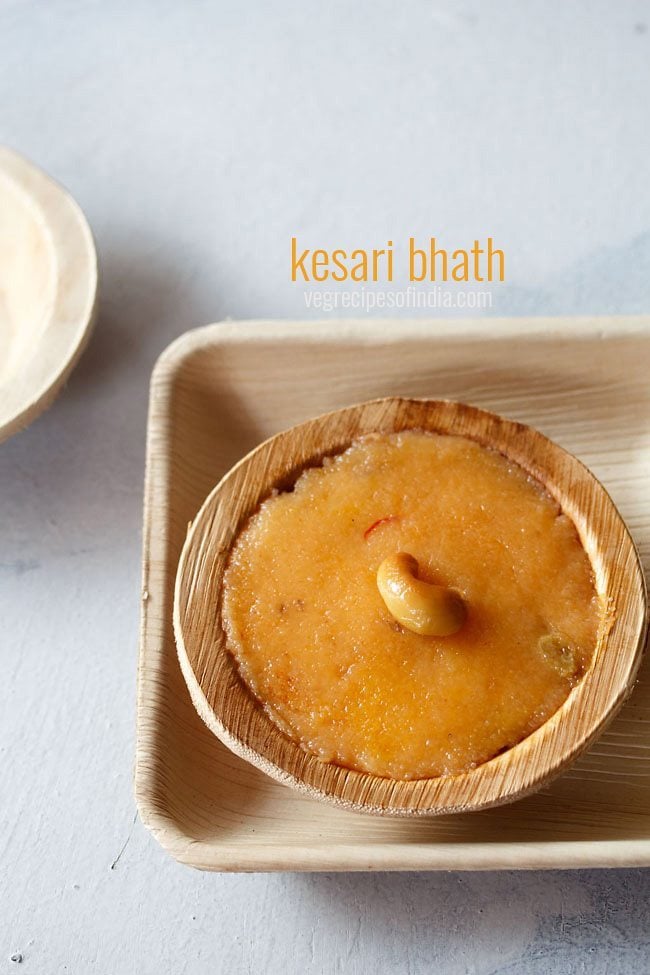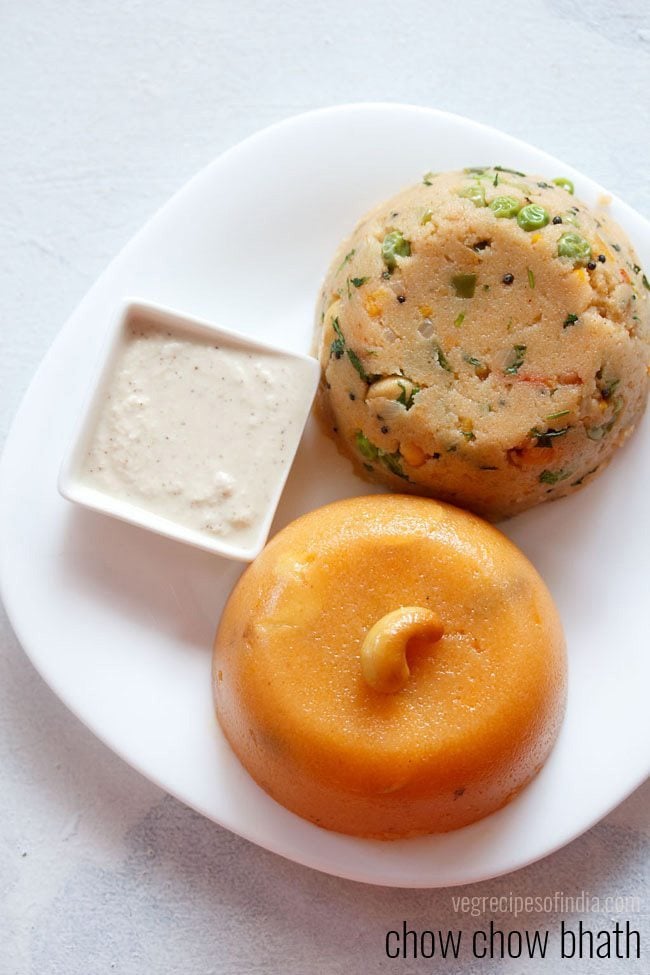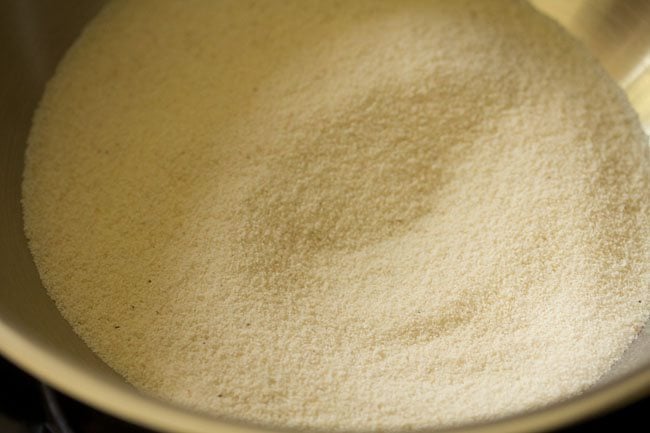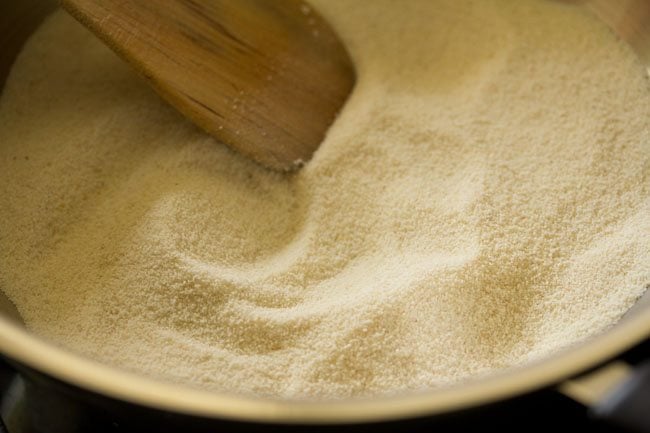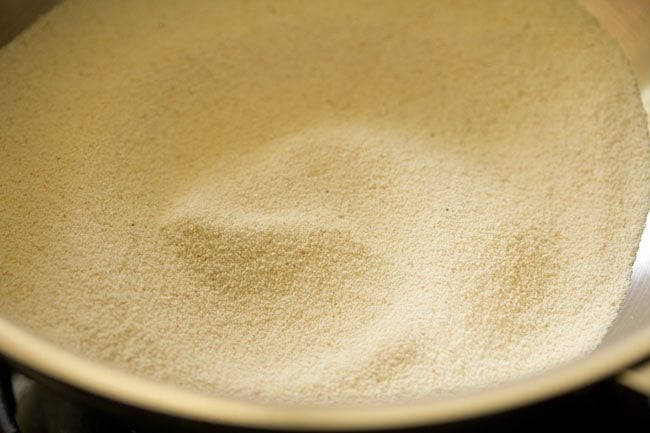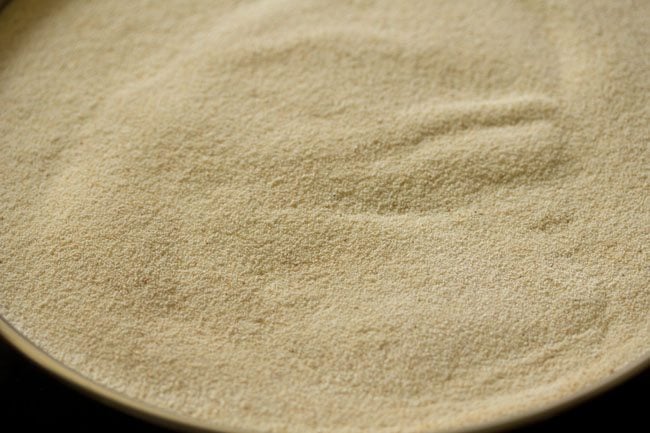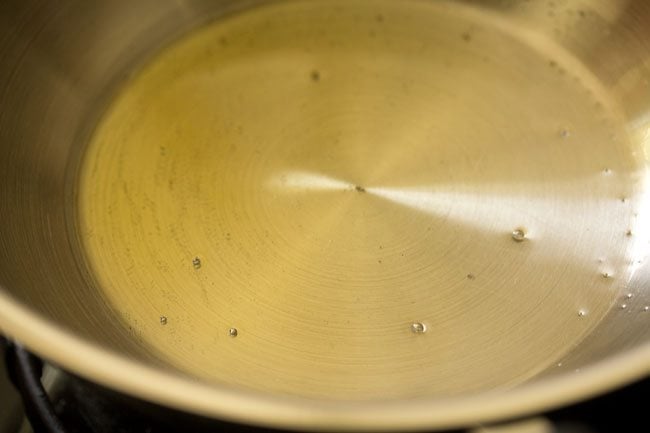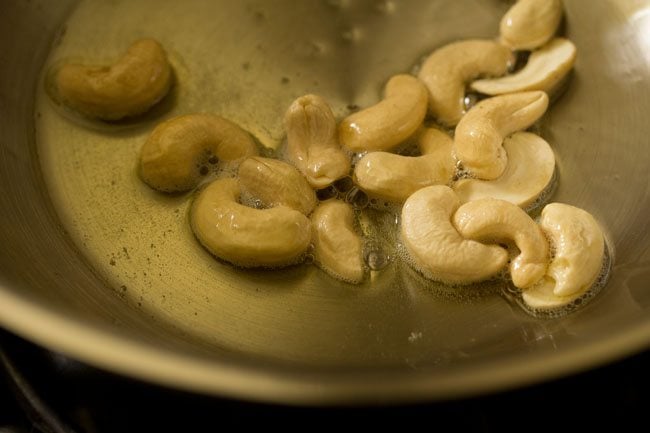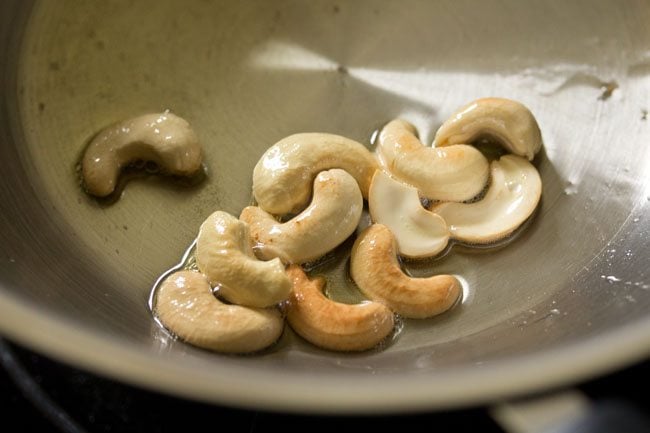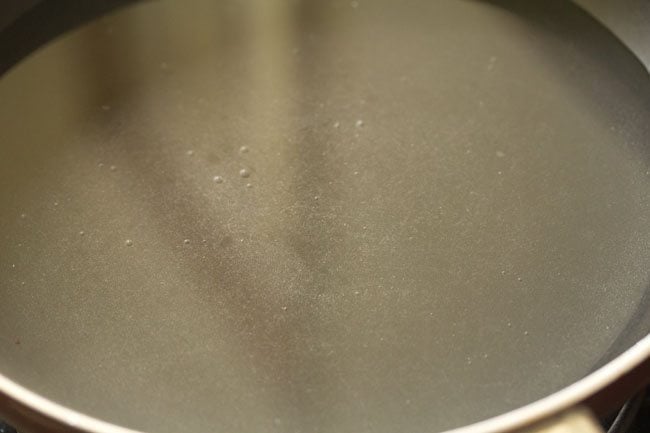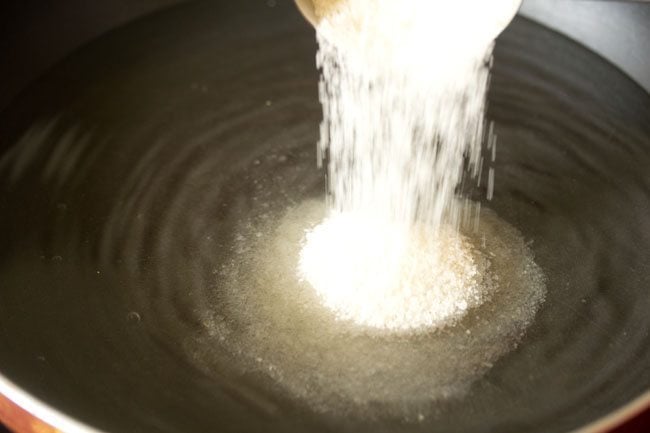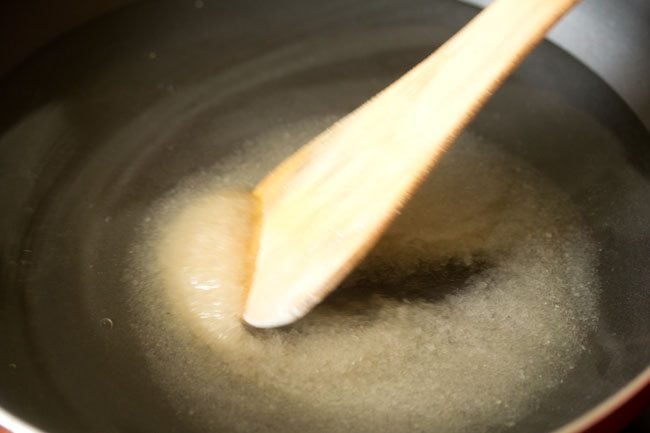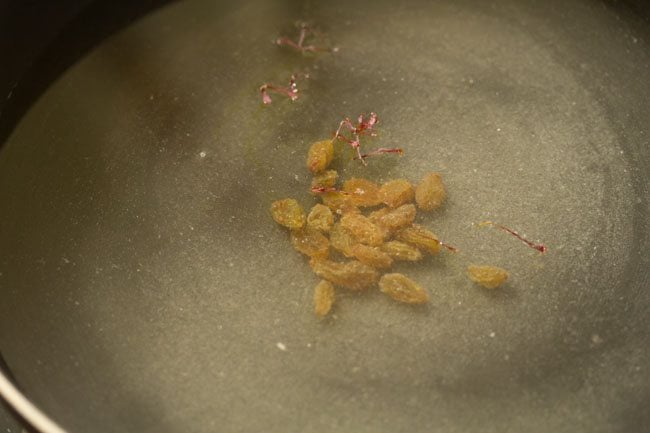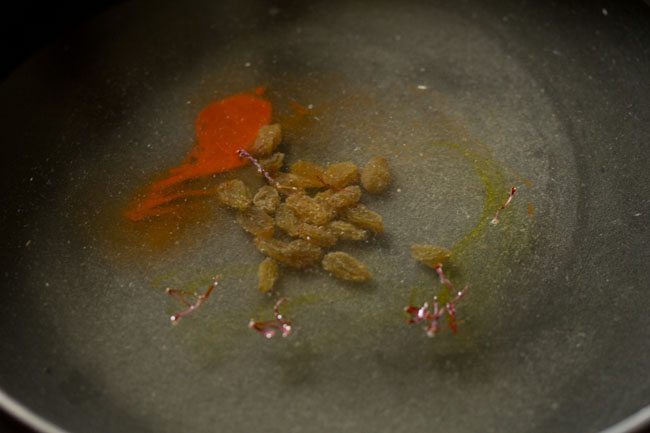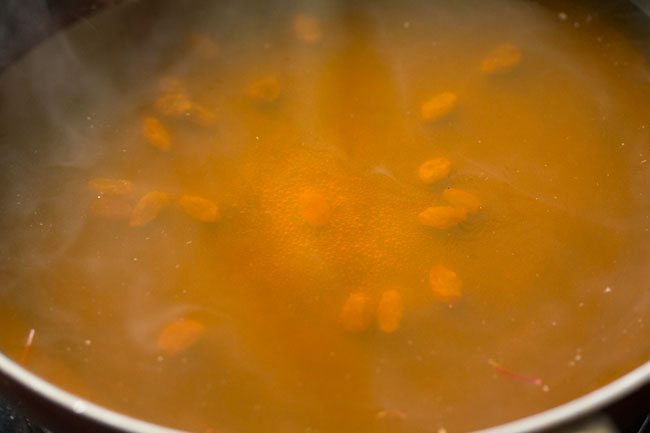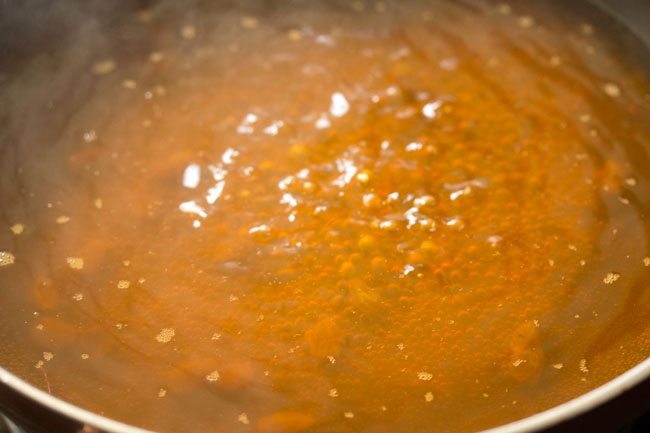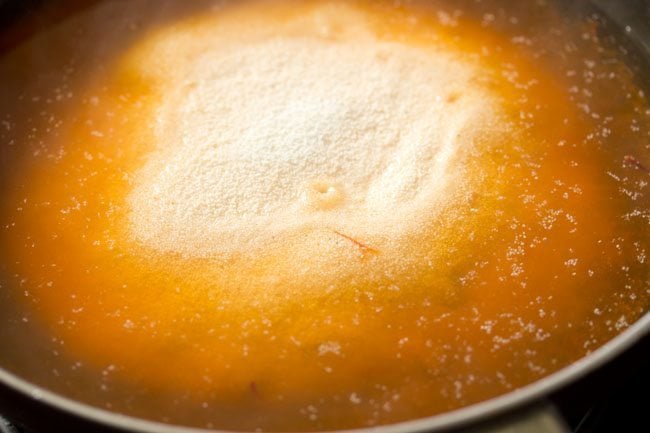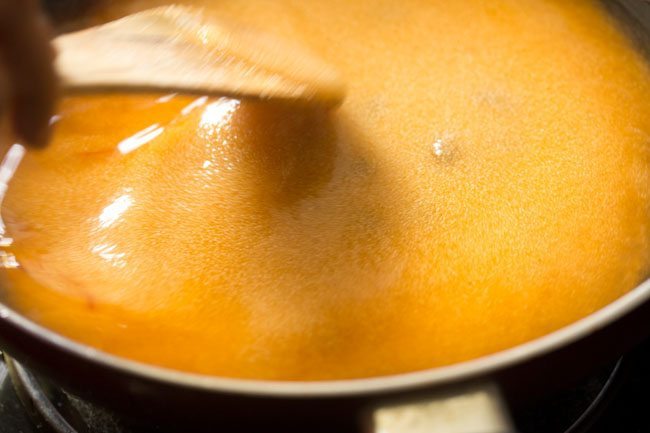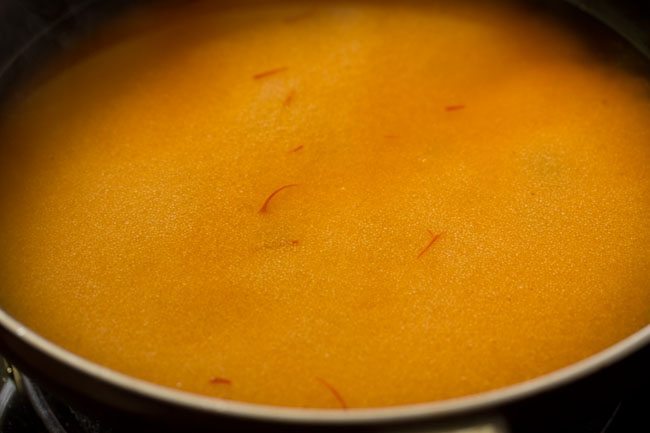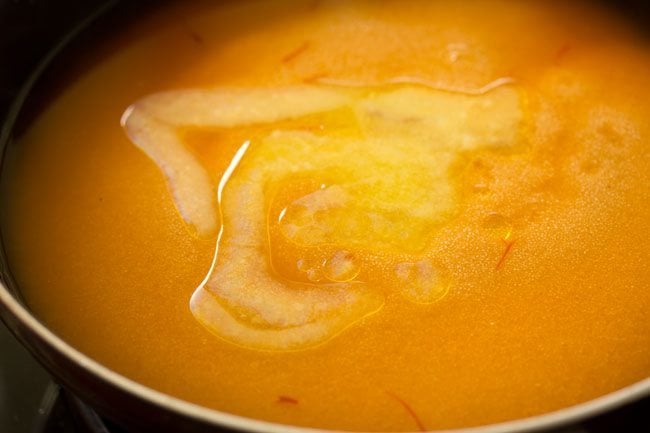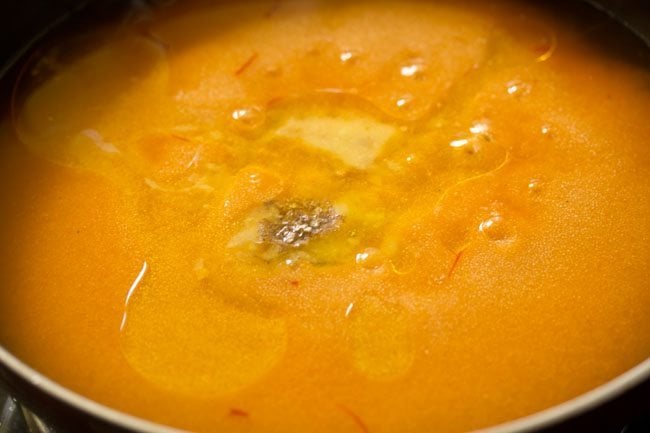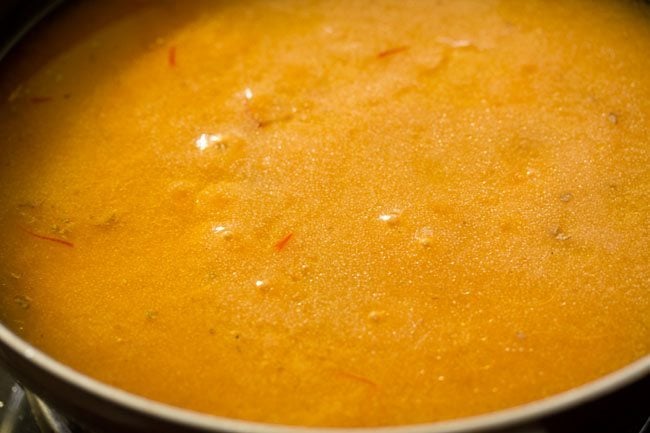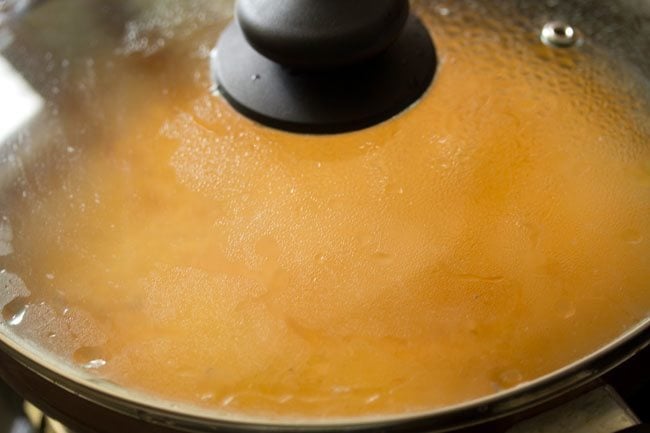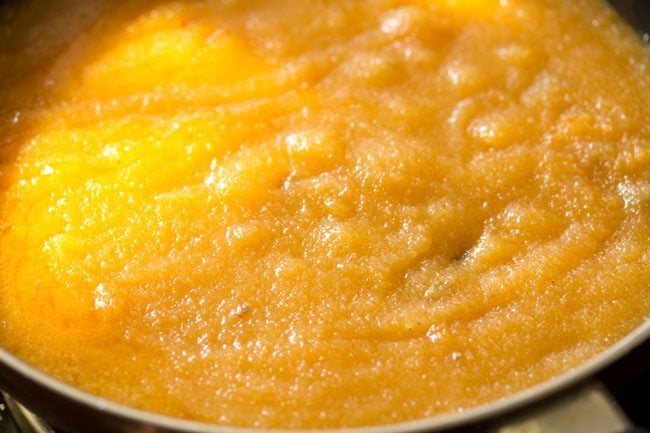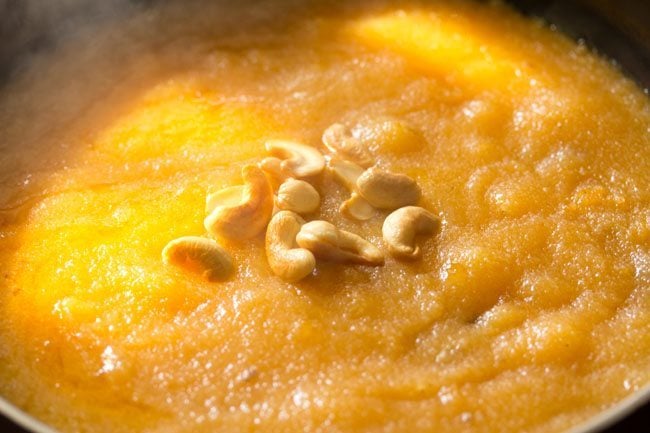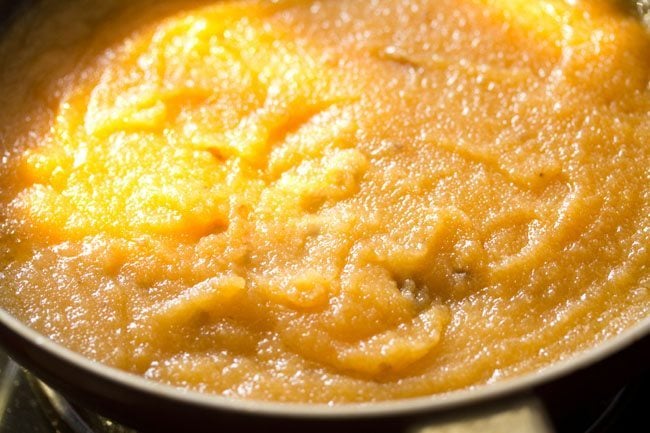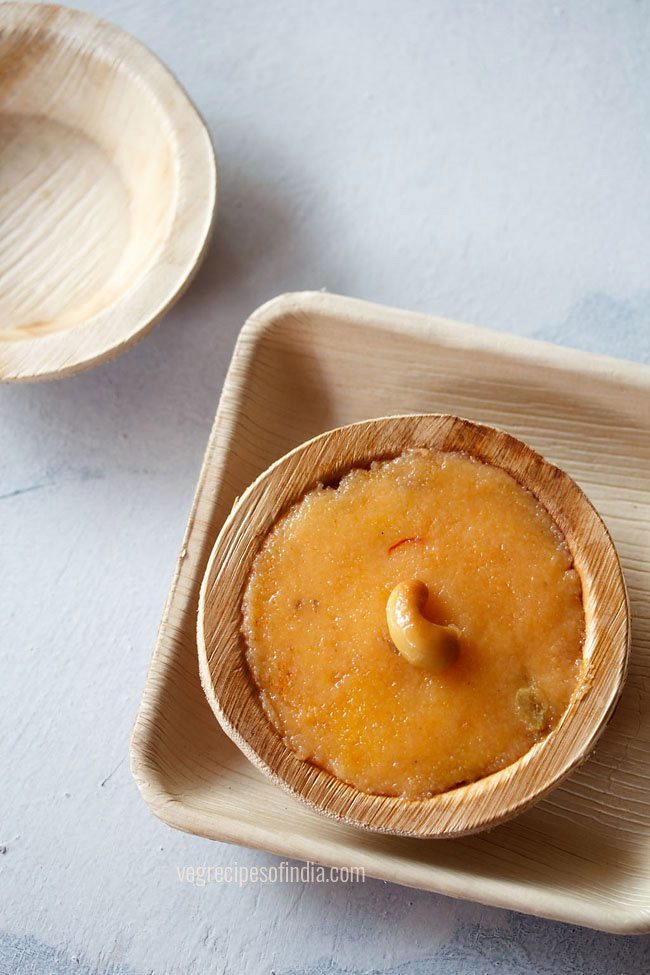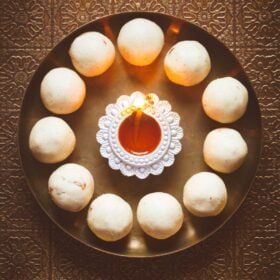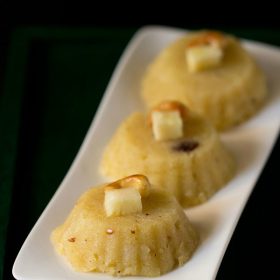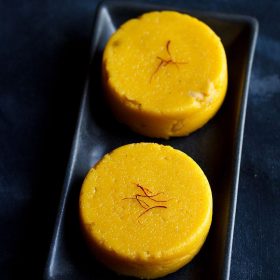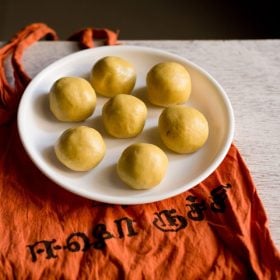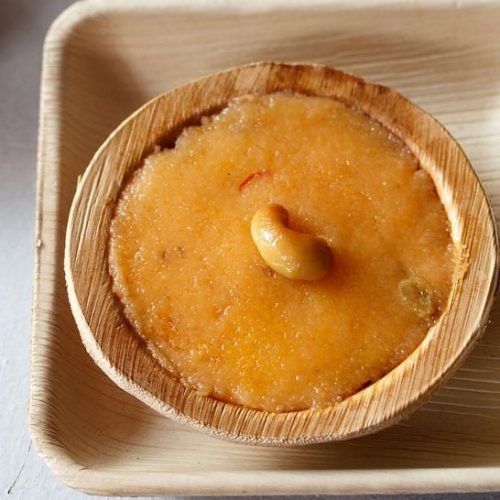About Kesari Bath
Kesari Bath, also referred to as Kesari Bhaat, Kesari Baat or even Kesari Bat is primarily a Karnataka style of making a halwa from classic ingredients like rava, ghee, sugar, water/milk and flavorings like cardamom and some nuts or dry fruits. Another feature that makes it distinct than its North Indian counterpart is the addition of a natural orange or yellow color (even saffron and turmeric powder can be used) in it, to bring in a beautiful hue. The origin of the Kesari Bath Recipe is considered majorly to be in Karnataka, but there are ancient evidences of it being made in other South Indian states like Tamil Nadu, Kerala and Andhra Pradesh as well. There are multiple variations of the Kesari Bath where it may have different fruity flavors like that of mango, banana, pineapple and even coconut. It is a popular preparation during the festival of Ugadi as well. Normally, the preparation is relished as a sweet dish or dessert in these states. However, in Karnataka, it forms a part of a unique breakfast dish called the Chow Chow Bath where it is served together with Khara Bath. Since we stayed in Bangalore (now Bengaluru) for quite some time, one of our special go-to breakie dishes was this Chow Chow Bath itself. We absolutely loved it as it served both savory and sweet preparations together and made for a filling meal. So, basically a savory Khara Bath (rava khichadi with mixed veggies) along with the sweet Kesari Bath and an earthy Coconut Chutney together forms the composition of Chow Chow Bath. The mélange of flavors from all these dishes individually, makes it a super hit for the palate. You must try this dish at home. You too will absolutely love it!
About My Recipe
The word ‘kesari’ in the Kesari Bath Recipe, literally means the color ‘orange.’ Hence, this silken sweet pudding also essentially has an orange shade to it. Sometimes, it may be a bright yellow-colored too. These hues are achieved in this sweet dish by the addition of edible food colors or natural ingredients that add orange color. Usually, in restaurants and hotels, they use artificial colors to achieve this result in the dish. But I will always suggest to use natural edible food extracts or organic coloring agents like saffron or turmeric. When using turmeric, add just a pinch of it. In my recipe, I have used both a natural orange color extract as well as saffron strands. Since a generous quantity of ghee goes into the making of Kesari Bath (also the rava bath), you can prepare them once a while at home and enjoy a rich, hearty and delectable meal. If you plan to make these often, then I’d say reduce the quantity of ghee. But doing so, especially in the Kesari Bath Recipe, might just bring down the flavors a little low as it tastes better with more ghee. Hence, best is to make it during special times like any festive occasions and parties and get-togethers, when you actually indulge in rich food. This is definitely a quick recipe which takes about 20 minutes to get done. Have it as a breakfast, sweet snack or as a dessert after your meals, your choice completely.
How to make Kesari Bath
Roast Rava
- Heat a thick bottomed heavy pan first. Keep the heat to a low and add ½ cup fine cream of wheat or semolina (rava or sooji).
- Stirring often, roast rava on low heat.
- Roast till the rava becomes fragrant and looks crisp. The fine rava granules should also separate. Roasting rava takes about 5 to 6 minutes on low heat. Then, turn off the heat. Keep in mind that the time taken to roast will depend on the pan type and thickness & the intensity of heat. So you can consider to roast for a few more minutes if needed.
- Take the roasted rava on a plate.
Fry Cashews
- In the same pan, take ½ tablespoon ghee.
- Add 10 to 12 cashews.
- Stirring often, on low to medium heat, fry till the cashews turn golden. Keep aside. Reserve this ghee. We will add it in the kesari, later.
Make Sugar Solution
- In another thick bottomed pan or kadai, take 1.5 cups water.
- Add ⅓ cup sugar (60 grams). You can also add ½ cup sugar for a sweeter taste.
- Keep the pan on low heat and stir very well, so that the sugar dissolves.
- Add ½ tablespoon raisins and a pinch of saffron strands. I have added raisins in the sugar solution and they do soften up while cooking. If you want, you can even fry the raisins with cashews.
- Add 1 to 2 drops of natural food color extract if using, or else skip it. You can even add a pinch of turmeric powder.
- Mix very well.
- On low-medium heat, bring this sugar solution to a boil.
Make Kesari Bath
- When it comes to a boil, lower the heat. Add the roasted rava in 2 to 3 batches. First, add one batch and quickly stir so that no lumps are formed.
- Continue to add the remaining batch of rava. 17. Mix very well.
- Add the reserved ghee and 1.5 to 2.5 tablespoons more ghee.
- Add ¼ teaspoon green cardamom powder.
- Mix very well, so that the ghee is distributed evenly in the Kesari Bhaat.
- Cover the pan and on low heat or sim, let the mixture cook.
- Cook for 3 to 4 minutes. The rava will absorb the water and get done. The ghee will also be absorbed and the mixture will also thicken. You should not see any tiny whitish or creamish specks on the rava. If you see, this means that the rava is still not cooked well.
- Once the rava is cooked well, add the fried cashews. 21. Mix very well.
- Serve Kesari Bath hot or warm. You can also pour it in in small to medium steel bowls or in small to medium tart moulds and let them become warm. Once warm, then unmold and serve.
Expert Tips
Please be sure to rate the recipe in the recipe card or leave a comment below if you have made it. For more vegetarian inspirations, Sign Up for my emails or follow me on Instagram, Youtube, Facebook, Pinterest or Twitter. Rava Laddu Recipe | Suji Ke Laddu Pineapple Kesari | Pineapple Halwa | Pineapple Sheera Mango Kesari | Mango Sheera Maladu Recipe | Maa Laddu | Roasted Gram Ladoo This Kesari Bath recipe from the blog archives was first published on October 2016. It has been updated and republished on March 2023.
